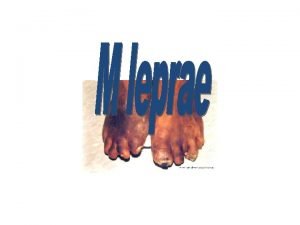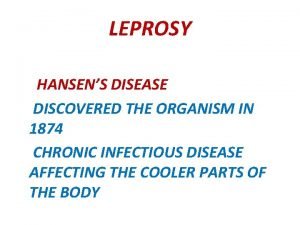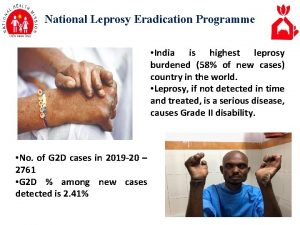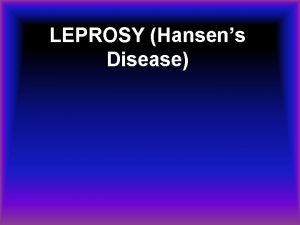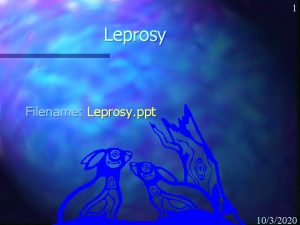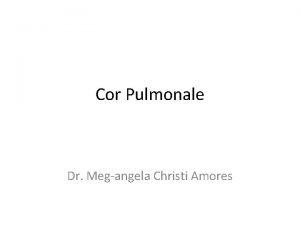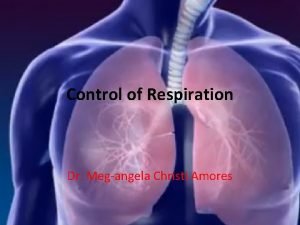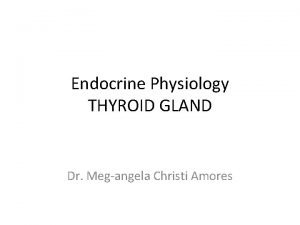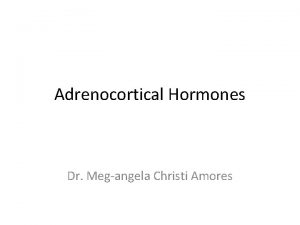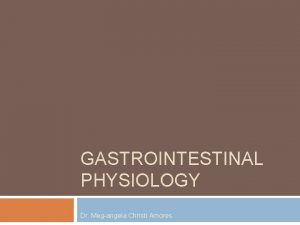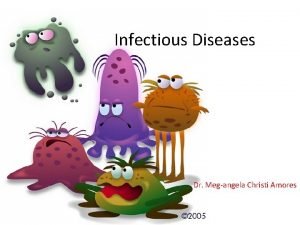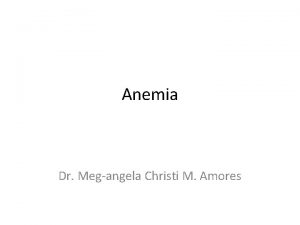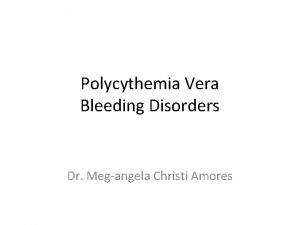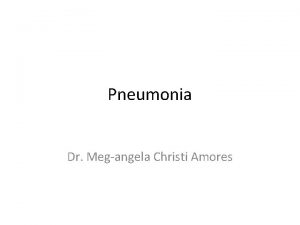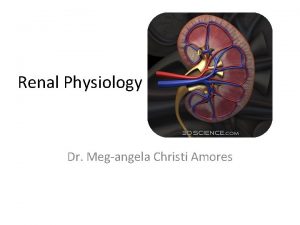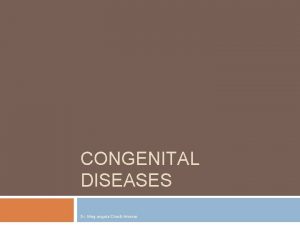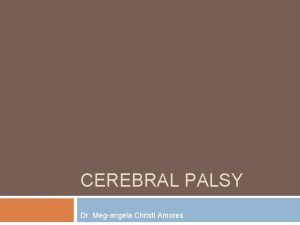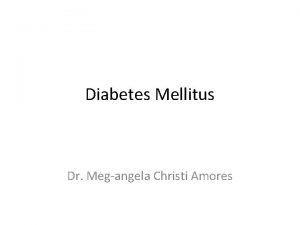Leprosy Dr Megangela Christi Amores Leprosy A k
















- Slides: 16

Leprosy Dr. Meg-angela Christi Amores

Leprosy • A. k. a. Hansen’s Disease • nonfatal, chronic infectious disease caused by Mycobacterium leprae • clinical manifestations are largely confined to the skin, peripheral nervous system, upper respiratory tract, eyes, and testes

Etiology • Mycobacterium leprae – obligate intracellular bacillus – confined to humans, armadillos in certain locales, and sphagnum moss – Acid fast; ideally detected in tissue sections by a modified Fite stain – almost exclusively a disease of the developing world – associated with poverty and rural residence


Transmission • Remains uncertain • Nasal droplet infection, contact with infected soil, and even insect vectors have been considered the prime candidates • bedbugs and mosquitoes • ~50% of leprosy patients have a history of intimate contact with an infected person

Disease Spectrum • Incubation period: between 2 and 40 years, although it is generally 5– 7 years • polar tuberculoid (TT) • borderline tuberculoid (BT) • mid-borderline (BB, which is rarely encountered) • borderline lepromatous (BL) • polar lepromatous (LL)

• Tuberculoid Leprosy • symptoms confined to the skin and peripheral nerves • consist of one or a few hypopigmented macules or plaques • sharply demarcated and hypesthetic, often have erythematous or raised borders, • devoid of the normal skin organs (sweat glands and hair follicles) • dry, scaly, and anhidrotic.

• Tuberculoid Leprosy • asymmetric enlargement of one or a few peripheral nerves • most commonly affected are the ulnar, posterior auricular, peroneal, and posterior tibial nerves, with associated hypesthesia and myopathy

• Lepromatous Leprosy • symmetrically distributed skin nodules , raised plaques, or diffuse dermal infiltration, which, when on the face, results in leonine facies • loss of eyebrows and eyelashes, pendulous earlobes, and dry scaling skin, particularly on the feet • acral, distal, symmetric peripheral neuropathy and a tendency toward symmetric nerve-trunk enlargement

• Lepromatous Leprosy • bacilli are numerous in the skin (as many as 109/g), where they are often found in large clumps (globi), and in peripheral nerves • bacilli are plentiful in circulating blood and in all organ systems except the lungs and the central nervous system • nerve enlargement and damage tend to be symmetric

Complications • Extremities – primarily a consequence of neuropathy leading to insensitivity and myopathy – affects fine touch, pain, and heat receptors but generally spares position and vibration appreciation – ulnar nerve • clawing of the fourth and fifth fingers • loss of sensation – loss of distal digits in leprosy is a consequence of insensitivity, trauma, secondary infection

Complications • Nose – chronic nasal congestion and epistaxis – destruction of the nasal cartilage, with consequent saddle-nose deformity or anosmia • Eye – lagophthalmos and corneal insensitivity – uveitis, with consequent cataracts and glaucoma

Complications • Testes – mild to severe testicular dysfunction – decreased testosterone, and aspermia or hypospermia – impotent and infertile • Amyloidosis • Nerve Abscesses – cellulitic appearance of the skin – affected nerve is swollen and exquisitely tender

Diagnosis – characteristic skin lesions and skin histopathology – associated with diffuse hyperglobulinemia, which may result in false-positive serologic tests (e. g. , VDRL, RA, ANA)

Treatment • dapsone (50– 100 mg/d), clofazimine (50– 100 mg/d, 100 mg three times weekly, or 300 mg monthly), and rifampin (600 mg daily or monthly)

Prevention and Control • Vaccination at birth with bacille Calmette. Guérin (BCG) has proved variably effective in preventing leprosy
 Leprosy
Leprosy Leprosy
Leprosy Naaman healed of leprosy lesson
Naaman healed of leprosy lesson Eryhtema
Eryhtema Antileprotic classification
Antileprotic classification Four men with leprosy
Four men with leprosy Leprosy
Leprosy National leprosy eradication programme ppt
National leprosy eradication programme ppt Leprosy disease
Leprosy disease Trophic ulcer ppt
Trophic ulcer ppt Cor pulmonale chronicum
Cor pulmonale chronicum Puerto rico patria mia la tierra de mis amores
Puerto rico patria mia la tierra de mis amores Comenzamos la semana
Comenzamos la semana Amanda amores biography
Amanda amores biography Canto ix ilha dos amores
Canto ix ilha dos amores Esta semana en amores
Esta semana en amores Puerto rico patria mia la tierra de mis amores
Puerto rico patria mia la tierra de mis amores



